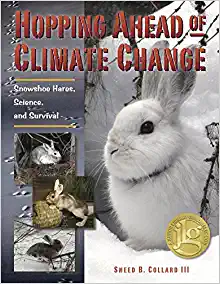Students never seem to lose their sense of wonder when it comes to snow. The unexpected snow day, delayed start, or early dismissal has the potential to take student learning off the clear path you’ve carefully shoveled as schedules are rearranged and students are excited to play — no matter their age.
But play during the long, cold, and sometimes unpredictable months of winter doesn’t have to be limited to the outdoors. What can you do in the classroom with students on short, cold, snowy, icy, and stormy days? Create relevant learning experiences and increase student engagement!
When students are engaged, they’re more curious, creative, and enthusiastic. They’re more likely to enjoy their work in the classroom, persist in the face of challenges, and experience a sense of wonder, delight, and accomplishment in their work. Overall, engaged students are more successful in their learning tasks and in meeting the standards.
Recess in winter may never be the same. Engage your students by exploring science during the winter months! Here’s how:
-
Have a ball experimenting with ice balloons from the Exploratorium as you learn about water chemistry, phase changes, and density.
-
While you’re at it, teach your students to ask questions like a scientist to give them the opportunity to engage in the NGSS practice of asking questions and defining problems — a critical practice for all grade levels.
-
Have your students heard of a Bomb Cyclone? Talk with your students about what makes this weather phenomenon so cool. (yes, we did that on purpose)
-
Ice Bocce! There are many questions that you can investigate or research as you play. Infuse prompts such as, “At what temperature will our bocce balls melt?” and, “Will the green one melt faster than the red one? “
-
Snow Science provides data and research on the phenomena of snow. What patterns can students see in their local weather? What predictions can they make about snowfall or lack thereof?

-
Snow, sledding, and skiing provide many opportunities to integrate mathematical problem-solving and literacy into your science lessons. And although this engineering project may need a few adjustments to make it three-dimensional, it’s surely a learning experience that’ll keep students engaged.
-
If you want to spend quality science time diving into the structures and properties of matter, there is a clear benefit for students in second and fifth grades. Check out this NGSS-aligned resource on melting and freezing. For resources about how temperature affects different forms of matter or on exploring how different types of matter have different properties, look into these classroom resources from NGSS@NSTA.
-
What happens when you blow bubbles outside on one of the coldest days of the year? Watch this #SquadinAction video from Meg Richard to find out, then try it with your students!
- You can’t talk about all the snow and the cold without thinking about weather and climate. Why not analyze the weather data for a certain locale?

-
What can we learn about climate change? In the book, Hopping Away from Climate Change: Snowshoe Hares, Science, and Survival by Sneed B. Collard, students read and explore how living things are impacted by changes in the environment by studying the case of the snowshoe hare.
-
A challenge that presents itself for science educators is, How might we modify some of these lesson ideas so that they’re more NGSS aligned? No matter the weather, more NGSS-aligned resources are being developed every day. Check out these quality examples of science lessons and units.
Now, get out there and use the winter weather to your advantage! It’ll help bring spring break just a little bit closer.






